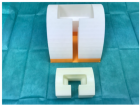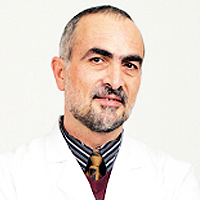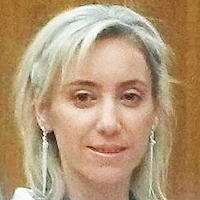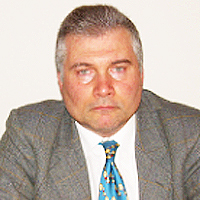Abstract
Research Article
Chondrogenic re-differentiation potential of chondrocytes after monolayer culture: Comparison between osteoarthritis and young adult patients
Kazuki Oishi*, Shusa Ohshika, Ken-Ichi Frukawa, Eiichi Tsuda, Yuji Yamamoto and Yasuyuki Ishibashi
Published: 27 March, 2019 | Volume 4 - Issue 1 | Pages: 016-023
Purpose: Monolayer passage of chondrocytes results in dramatic phenotypic changes. This “de-differentiation” is expected to restore the chondrogenic properties such as “re-differentiation” in autologous chondrocyte implantation (ACI). The purpose of this study was to compare the chondrogenic re-differentiation potential of chondrocytes, from osteoarthritis (OA) patients and young adult patients, after monolayer culture.
Methods: Chondrocytes from five old patients with knee OA (OAC) and five young patients with recurrent shoulder dislocation (non-OAC) were used. The chondrocytes from passages 1 to 3 were analyzed for the expression of cell surface markers (CD73, CD90, CD105, and CD44) by flow cytometric analysis. Chondrocytes of passage 4 were cultured as pellets for re-differentiation and evaluated histologically. Real-time PCR were performed to measure the chondrogenic related genes transcriptional levels.
Results: OAC and non-OAC had comparable positive ratios for CD44, CD73, CD90, and CD105. The expression of CD105 was upregulated from passage 1 to passage 3 in OAC, and it increased at the same level as in non-OAC during passage 2 and 3. The expression of COL2 decreased from passage 1 to passage 3 in both the groups. There were no statistical differences in the Bern Scores between OAC and non-OAC.
Conclusion: The chondrocytes from OA patients and young adult patients had chondrogenic re-differentiation potential. The changes in cell surface markers and chondrogenic related genes showed similarity for both the groups. Our findings suggest that OAC can become the cell source for ACI.
Read Full Article HTML DOI: 10.29328/journal.jsmt.1001038 Cite this Article Read Full Article PDF
References
- Brittberg M, Lindahl A, Nilsson A, Ohlsson C, Isaksson O, et al. Treatment of deep cartilage defects in the knee with autologous chondrocyte transplantation, N Engl J Med. 1994; 331: 889-895. Ref.: https://goo.gl/hRWS2M
- Goyal D, Goyal A, Keyhani S, Lee EH, Hui JH Evidence-based status of second- and third-generation autologous chondrocyte implantation over first generation: a systematic review of level I and II studies. Arthroscopy. 2013; 29: 1872-1878. Ref.: https://goo.gl/9H4U1r
- Oussedik S, Tsitskaris K, Parker D. Treatment of articular cartilage lesions of the knee by microfracture or autologous chondrocyte implantation: a systematic review. Arthroscopy. 2015; 4: 732-744. Ref.: https://goo.gl/wdQkML
- Benya PD, Shaffer JD. Shaffer. Dedifferentiated chondrocytes reexpress the differentiated collagen phenotype when cultured in agarose gels. Cell 1982; 30: 215-224. Ref.: https://goo.gl/6h3gTg
- Diaz-Romero J, Gaillard JP, Grogan SP, Nesic D, Trub T, et al. Immunophenotypic analysis of human articular chondrocytes: changes in surface markers associated with cell expansion in monolayer culture. J Cell Physiol. 2005; 202: 731-742. Ref.: https://goo.gl/BxJxsC
- Bernstein P, Sperling I, Corbeil D, Hempel U, Fickert S Progenitor cells from cartilage--no osteoarthritis-grade-specific differences in stem cell marker expression. Biotechnol Prog. 2013; 29: 206-212. Ref.: https://goo.gl/TiYbEz
- Salamon A, Jonitz-Heincke A, Adam S, Rychly J, Müller-Hilke B, et al. Articular cartilage-derived cells hold a strong osteogenic differentiation potential in comparison to mesenchymal stem cells in vitro. Exp Cell Res. 2013; 319: 2856-2865. Ref.: https://goo.gl/wR4LQn
- Yoshimura N, Muraki S, Oka H, Mabuchi A, En-Yo Y, et al. Prevalence of knee osteoarthritis, lumbar spondylosis, and osteoporosis in Japanese men and women: the research on osteoarthritis/osteoporosis against disability study. J Bone Miner Metab. 2009; 27: 620-628. Ref.: https://goo.gl/BxZLk1
- Yang KG, Saris DB, Geuze RE, van Rijen MH, van der Helm YJ, et al. Altered in vitro chondrogenic properties of chondrocytes harvested from unaffected cartilage in osteoarthritic joints. Osteoarthr Cartil. 2006; 14: 561-570. Ref.: https://goo.gl/qWSF5M
- Dehne T, Karlsson C, Ringe J, Sittinger M, Lindahl A. Chondrogenic differentiation potential of osteoarthritic chondrocytes and their possible use in matrix-associated autologous chondrocyte transplantation. Arthritis Res Ther. 2009; 11: R133. Ref.: https://goo.gl/SCnRKp
- Lin Z, Fitzgerald JB, Xu J, Willers C, Wood D, et al. Gene expression profiles of human chondrocytes during passaged monolayer cultivation. J Orthop Res. 2008; 26: 1230-1237. Ref.: https://goo.gl/LHW7g8
- Tanaka N, Ikeda Y, Yamaguchi T, Furukawa H, Mitomi H, et al. α5β1 integrin induces the expression of noncartilaginous procollagen gene expression in articular chondrocytes cultured in monolayers.. Arthritis Res Ther. 2013; 15: R127. Ref.: https://goo.gl/5t19th
- Aulthouse AL, Beck M, Griffey E, Sanford J, Arden K, et al. Expression of the human chondrocyte phenotype in vitro. In Vitro Cell Dev Biol. 1989; 7: 659-668. Ref.: https://goo.gl/bEFGVp
- Grogan SP, Barbero A, Winkelmann V, Rieser F, Fitzsimmons JS, et al. Visual histological grading system for the evaluation of in vitro-generated neocartilage. Tissue Eng. 2006; 12: 2141-2149. Ref.: https://goo.gl/BVChBA
- Pierelli L, Bonanno G, Rutella S, Marone M, Scambia G, et al. CD105 (endoglin) expression on hematopoietic stem/progenitor cells. Leuk Lymphoma. 2001; 42: 1195-1206. Ref.: https://goo.gl/k96nwV
- Jaggupilli A, Elkord E. Significance of CD44 and CD24 as cancer stem cell markers: an enduring ambiguity. Clin Dev Immunol. 2012; 2012: 708036. Ref.: https://goo.gl/ysTb1K
- Jonitz A, Lochner K, Peters K, Salamon A, Pasold J, et al. Differentiation capacity of human chondrocytes embedded in alginate matrix. Connect Tissue Res. 2011; 52: 503-511. Ref.: https://goo.gl/9bJZwJ
- Schnabel M1, Marlovits S, Eckhoff G, Fichtel I, Gotzen L, et al. Dedifferentiation-associated changes in morphology and gene expression in primary human articular chondrocytes in cell culture. Osteoarthr Cartil. 2002; 10: 62-70. Ref.: https://goo.gl/SJNXeA
- von der Mark K, Gauss V, von der Mark H, Müller P. Relationship between cell shape and type of collagen synthesised as chondrocytes lose their cartilage phenotype in culture. Nature. 1977; 267: 531-532. Ref.: https://goo.gl/oJe9xE
- Novakofski KD, Berg LC, Bronzini I, Bonnevie ED, Poland SG, et al. Joint-dependent response to impact and implications for post-traumatic osteoarthritis, Osteoarthr. Cartil. 2015; 23: 1130-1137. Ref.: https://goo.gl/CDXqEf
- Vincenti MP, Brinckerhoff CE. Brinckerhoff. Transcriptional regulation of collagenase (MMP-1, MMP-13) genes in arthritis: integration of complex signaling pathways for the recruitment of gene-specific transcription factors. Arthritis Res. 2002; 4: 157-164. Ref.: https://goo.gl/aGzdjA
- Barbero A, Grogan S, Schäfer D, Heberer M, Mainil-Varlet P, et al. Age related changes in human articular chondrocyte yield, proliferation and post-expansion chondrogenic capacity. Osteoarthr Cartil. 2004; 12: 476-484. Ref.: https://goo.gl/fHfDkd
Figures:
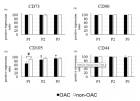
Figure 1
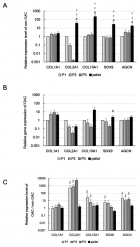
Figure 2
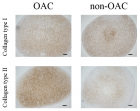
Figure 3
Similar Articles
-
Physical activity can change the physiological and psychological circumstances during COVID-19 pandemic: A narrative reviewKhashayar Maroufi*. Physical activity can change the physiological and psychological circumstances during COVID-19 pandemic: A narrative review. . 2021 doi: 10.29328/journal.jsmt.1001051; 6: 001-007
-
‘Rotational alignment on patients’ clinical outcome of total knee arthroplasty: Distal femur axillary X-ray view to qualify rotation of the femoral componentS Magersky*. ‘Rotational alignment on patients’ clinical outcome of total knee arthroplasty: Distal femur axillary X-ray view to qualify rotation of the femoral component. . 2020 doi: 10.29328/journal.jsmt.1001050; 5: 008-011
-
Shoulder muscle weakness effects on muscle hardness around the shoulder joint and scapulaeKubota Atsushi*,Takayanagi Chiho,Kishimoto Kohei. Shoulder muscle weakness effects on muscle hardness around the shoulder joint and scapulae. . 2020 doi: 10.29328/journal.jsmt.1001049; 5: 001-007
-
Medical coverage of the 29th “Tour du Faso”Jean Marie Vianney Hope*,Abdoul Rahamane Cisse,Abdoulaye Ba. Medical coverage of the 29th “Tour du Faso”. . 2019 doi: 10.29328/journal.jsmt.1001040; 4: 038-042
-
Olfactory Dysfunction in Sports Players following Moderate and Severe Head Injury: A Possible Cut-off from Normality to PathologyGesualdo M Zucco*,Andrea Carletti,Richard J Stevenson. Olfactory Dysfunction in Sports Players following Moderate and Severe Head Injury: A Possible Cut-off from Normality to Pathology. . 2016 doi: 10.29328/journal.jsmt.1001001; 1: 001-005
-
Retrospective Analysis of Non-Contact ACL Injury Risk: A Case Series Review of Elite Female AthletesLee Herrington*,Ros Cooke. Retrospective Analysis of Non-Contact ACL Injury Risk: A Case Series Review of Elite Female Athletes. . 2017 doi: 10.29328/journal.jsmt.1001002; 2: 001-008
-
Translating an Evidence-Based Physical Activity Service From Context To Context: A Single Organizational Case StudyMarie-Eve Lamontagne,Kelly P Arbour-Nicitopoulos,Jennifer R Tomasone,Isabelle Cummings,Amy E Latimer-Cheung,François Routhier*. Translating an Evidence-Based Physical Activity Service From Context To Context: A Single Organizational Case Study. . 2017 doi: 10.29328/journal.jsmt.1001007; 2: 039-050
-
Effects of a short Cardiovascular Rehabilitation program in Hypertensive subjects: A Pilot StudyJuliana Bassalobre Carvalho Borges,Débora Tazinaffo Bueno,Monique Fernandes Peres,Ana Paula Aparecida Mantuani,Andréia Maria Silva,Giovane Galdino*. Effects of a short Cardiovascular Rehabilitation program in Hypertensive subjects: A Pilot Study. . 2017 doi: 10.29328/journal.jsmt.1001008; 2: 051-056
-
The Utility of Acupuncture in Sports Medicine: A Review of the Recent LiteratureMichael Malone*. The Utility of Acupuncture in Sports Medicine: A Review of the Recent Literature. . 2017 doi: 10.29328/journal.jsmt.1001004; 2: 020-027
-
Use of Hand Rehabilitation Board (Dominic’s Board) in Post Traumatic/Stroke Rehabilitation of the Upper LimbsDominic Essien,Christopher Ekpenyong*. Use of Hand Rehabilitation Board (Dominic’s Board) in Post Traumatic/Stroke Rehabilitation of the Upper Limbs. . 2017 doi: 10.29328/journal.jsmt.1001009; 2: 057-065
Recently Viewed
-
Various Theories of Fast and Ultrafast Magnetization DynamicsManfred Fähnle*. Various Theories of Fast and Ultrafast Magnetization Dynamics. Int J Phys Res Appl. 2024: doi: 10.29328/journal.ijpra.1001101; 7: 154-158
-
Forest History Association of WisconsinEd Bauer*. Forest History Association of Wisconsin. J Radiol Oncol. 2024: doi: 10.29328/journal.jro.1001071; 8: 093-096
-
Synthesis of Carbon Nano Fiber from Organic Waste and Activation of its Surface AreaHimanshu Narayan*,Brijesh Gaud,Amrita Singh,Sandesh Jaybhaye. Synthesis of Carbon Nano Fiber from Organic Waste and Activation of its Surface Area. Int J Phys Res Appl. 2019: doi: 10.29328/journal.ijpra.1001017; 2: 056-059
-
Obesity Surgery in SpainAniceto Baltasar*. Obesity Surgery in Spain. New Insights Obes Gene Beyond. 2020: doi: 10.29328/journal.niogb.1001013; 4: 013-021
-
Tamsulosin and Dementia in old age: Is there any relationship?Irami Araújo-Filho*,Rebecca Renata Lapenda do Monte,Karina de Andrade Vidal Costa,Amália Cinthia Meneses Rêgo. Tamsulosin and Dementia in old age: Is there any relationship?. J Neurosci Neurol Disord. 2019: doi: 10.29328/journal.jnnd.1001025; 3: 145-147
Most Viewed
-
Evaluation of Biostimulants Based on Recovered Protein Hydrolysates from Animal By-products as Plant Growth EnhancersH Pérez-Aguilar*, M Lacruz-Asaro, F Arán-Ais. Evaluation of Biostimulants Based on Recovered Protein Hydrolysates from Animal By-products as Plant Growth Enhancers. J Plant Sci Phytopathol. 2023 doi: 10.29328/journal.jpsp.1001104; 7: 042-047
-
Sinonasal Myxoma Extending into the Orbit in a 4-Year Old: A Case PresentationJulian A Purrinos*, Ramzi Younis. Sinonasal Myxoma Extending into the Orbit in a 4-Year Old: A Case Presentation. Arch Case Rep. 2024 doi: 10.29328/journal.acr.1001099; 8: 075-077
-
Feasibility study of magnetic sensing for detecting single-neuron action potentialsDenis Tonini,Kai Wu,Renata Saha,Jian-Ping Wang*. Feasibility study of magnetic sensing for detecting single-neuron action potentials. Ann Biomed Sci Eng. 2022 doi: 10.29328/journal.abse.1001018; 6: 019-029
-
Pediatric Dysgerminoma: Unveiling a Rare Ovarian TumorFaten Limaiem*, Khalil Saffar, Ahmed Halouani. Pediatric Dysgerminoma: Unveiling a Rare Ovarian Tumor. Arch Case Rep. 2024 doi: 10.29328/journal.acr.1001087; 8: 010-013
-
Physical activity can change the physiological and psychological circumstances during COVID-19 pandemic: A narrative reviewKhashayar Maroufi*. Physical activity can change the physiological and psychological circumstances during COVID-19 pandemic: A narrative review. J Sports Med Ther. 2021 doi: 10.29328/journal.jsmt.1001051; 6: 001-007

HSPI: We're glad you're here. Please click "create a new Query" if you are a new visitor to our website and need further information from us.
If you are already a member of our network and need to keep track of any developments regarding a question you have already submitted, click "take me to my Query."







